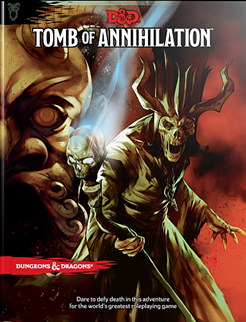 How often do your characters rest? Where do they rest? Do your characters always fight to the death?
How often do your characters rest? Where do they rest? Do your characters always fight to the death?
Further to my last article on the effects that the availability of healing has on the game, I was considering how other mechanics change the flow of the game. To some extent, the mechanics are elements of the old-style dungeon explorations that I still enjoy very much (although they’re now just part of my D&D experience rather than the entirety of it!)
Consider escaping from combat and monsters pursuing the characters. There are rules for handling this in AD&D, which I described in a previous article. If your characters have a fair chance of escaping from a combat, then it becomes a viable tactic when a combat starts going poorly. Without the chance of escaping, you’re left in a situation where every fight must be to the death – this isn’t great when you end up in something you can’t win. So, having rules for escaping gets away from that.
Even when escape is impossible, do you have monsters attempt to capture the characters? In 5E, this is something that orcs and other humanoid races could do. Orcs and hobgoblins like slaves. As long as they’re in melee, they’re happy to drop people to 0 hit points and take them back to be pastry chefs (or whatever) to their chieftains. (This is one thing that 5E definitely allows better than AD&D!)
I do enjoy morale rules and having monsters flee from combat when they’re losing. Typically, I use a variant of the Basic D&D rules (1981/3), though I also occasionally just decide based on the situation.
When your party expends a few spells and loses a few hit points, do you rest? During the early 2000s, we developed the concept of the 15-minute adventuring day, where the party engages on very short expeditions and then fully recovers abilities between encounters. It was generally not seen as a great thing. When you’re not in a ticking-clock scenario, there are a couple of things that can alter this style of play:
- Reactive monsters. If the monsters fortify their lair further – or even escape – between expeditions, it means that finishing the adventure in the first couple of attempts is far more important.
- Wandering monsters. If wandering monsters disrupt players resting in the dungeon, then the desire to actually rest there is diminished. I don’t want to completely remove resting but having a 1 in 6 chance of a wandering monster checked hourly or half-hourly – or every ten minutes! – can alter the feel of the dungeon significantly, as well as changing resting patterns.
- More wandering monsters. If the party needs to travel a fair distance into the dungeon to return to where they left off, do you check for wandering monsters while they travel? Doing so means that having long rests comes with the cost of inconsequential encounters.
That last is particularly interesting in AD&D, where the bulk of XP typically comes from treasure, not slaying monsters – and wandering monsters have no treasure. Thus, minimising your chances of meeting monsters is something to strive for.
One interesting factor about Tomb of Annihilation is that it’s impossible to leave the Tomb once you enter it. Wandering monsters exist (typically Tomb Guardians), but there’s no table to determine whether they appear; it’s all at the discretion of the DM.
Perhaps even more interesting: in the original Tomb of Horrors, the adventure makes a point of saying “no random encounters”! This is quite unusual for that era of adventure. Although, to some extent, it’s “these traps are so deadly, I don’t care what resources you have!”
